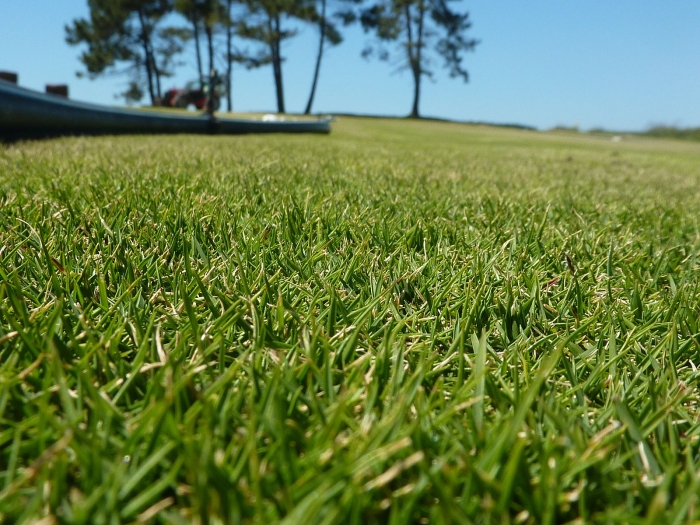Manila Grass
(Zoysia pungens)
Manila Grass (Zoysia pungens)
/
/

David-Pierre Mangiapan
CC BY-SA 3.0
Image By:
David-Pierre Mangiapan
Recorded By:
Copyright:
CC BY-SA 3.0
Copyright Notice:
Photo by: David-Pierre Mangiapan | License Type: CC BY-SA 3.0 | License URL: https://creativecommons.org/licenses/by-sa/3.0 | Uploader: Capolka | Publisher: Wikimedia Commons |



Estimated Native Range
Summary
Zoysia matrella, commonly known as Manila grass, is a warm-season, perennial grass that forms dense, fine-textured, green mats. It spreads vigorously by stolons and less commonly by rhizomes. Native to coastal grasslands and open ground in Southeast Asia, it has adapted to a variety of habitats including sandy soils and saline environments, making it well-suited for coastal erosion control. Manila grass is often used as a turfgrass for lawns, golf courses, and as a ground cover in tropical regions due to its tolerance to close mowing and foot traffic.
Manila grass is valued for its durability, low maintenance, and ability to create a lush, carpet-like lawn. It is particularly popular in the southern United States and in coastal areas where its salt tolerance is beneficial. It requires full sun to thrive and prefers well-drained soils, although it can tolerate a range of soil conditions. Regular watering is necessary for establishment, but once mature, Manila grass is drought-tolerant. It is slow to establish but once rooted, it can outcompete weeds and reduce the need for herbicides. Potential problems include susceptibility to certain lawn diseases, such as rust, and it may become invasive if not properly managed.CC BY-SA 4.0
Manila grass is valued for its durability, low maintenance, and ability to create a lush, carpet-like lawn. It is particularly popular in the southern United States and in coastal areas where its salt tolerance is beneficial. It requires full sun to thrive and prefers well-drained soils, although it can tolerate a range of soil conditions. Regular watering is necessary for establishment, but once mature, Manila grass is drought-tolerant. It is slow to establish but once rooted, it can outcompete weeds and reduce the need for herbicides. Potential problems include susceptibility to certain lawn diseases, such as rust, and it may become invasive if not properly managed.CC BY-SA 4.0
Plant Description
- Plant Type: Grass
- Height: 0.1-0.2 feet
- Width: 2-3 feet
- Growth Rate: Moderate
- Flower Color: N/A
- Flowering Season: Summer
- Leaf Retention: Deciduous
Growth Requirements
- Sun: Full Sun
- Water: Medium
- Drainage: Fast
Common Uses
Drought Tolerant, Low Maintenance
Natural Habitat
Coastal grasslands and open ground in Southeast Asia
Other Names
Common Names: Manila Grass
Scientific Names: , Zoysia pungens, Zoysia matrella var. matrella, Osterdamia zoysia var. typica, Zoysia malaccensis, Zoysia serrulata, Osterdamia tenuifolia, Osterdamia zoysia var. tenuifolia, Panicum bradypus, Panicum crinum-ursi
GBIF Accepted Name: Zoysia matrella var. matrella